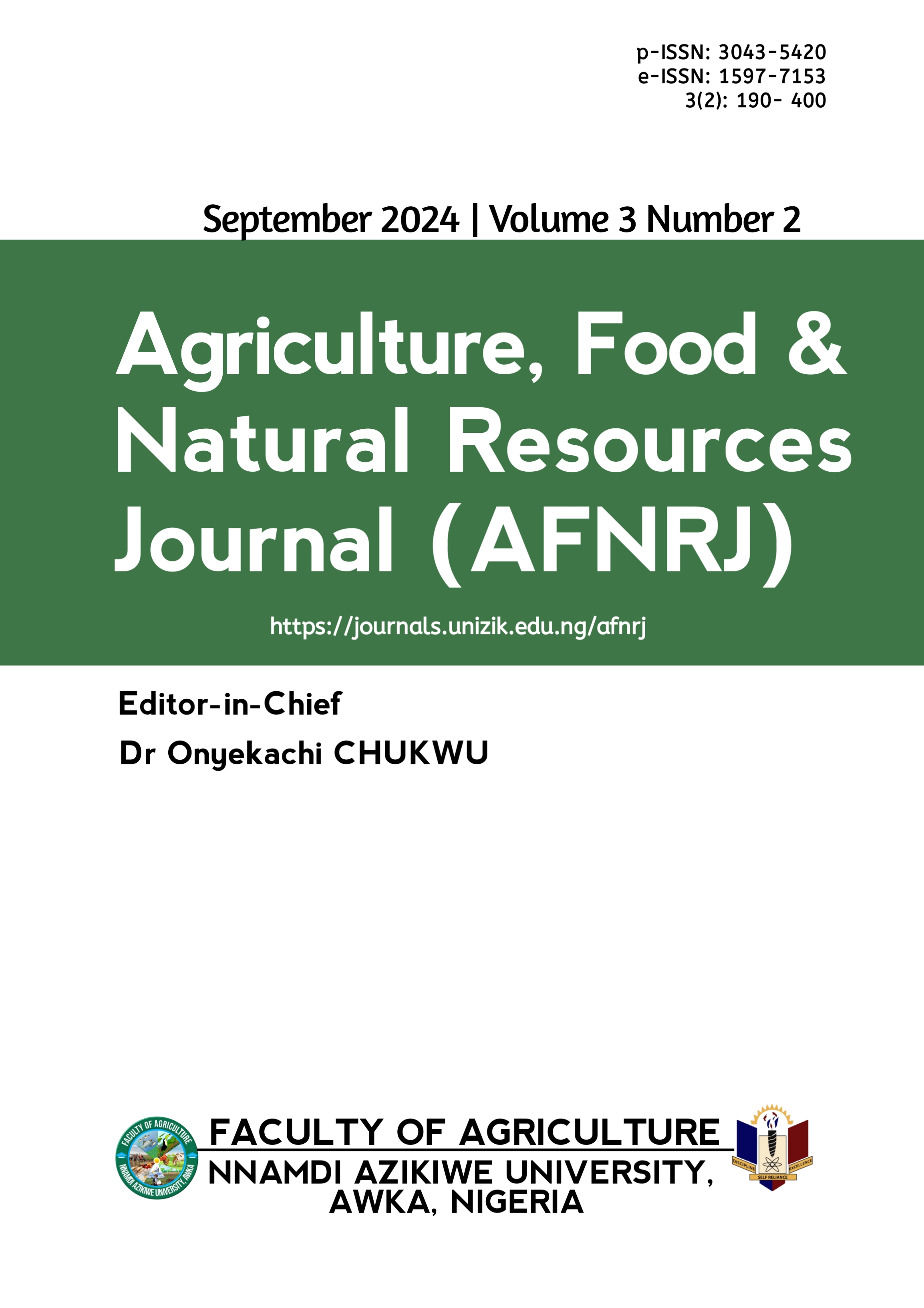Pedological characterization and classification of sandy soils along a toposequence in the tropical rainforest of Nigeria
DOI:
https://doi.org/10.5281/zenodo.14557476Keywords:
Catena, Land use, Red soils, Soil conservation, Soil depthAbstract
Soil profiles are essential for understanding soil variability and precise micro-management especially of farmers' fields. This study characterized the sandy soils occurring on a toposequence of Ojoto, Anambra State, Nigeria for appropriate conservation and management. Four profile pits were excavated along the toposequence, following the slope classes viz: hilltop, back-slope, foot-slope and toe-slope. Soil samples were collected from the soil profiles based on the pedogenetic horizons for morphological description, physicochemical properties and classification. The topsoil depths increased by 5 cm from the upper slope to the toe slope. Soil colour of the horizons mainly contrasted from strong brown (7.5YR 4/6) through yellowish red (5YR 5/8), with redness increasing with depth down the soil profiles. Soil structure contrasted from weak/fine granular to subangular blocky. Textural classes were mainly sandy (greater than 82 %) with little clay illuviation. Crestal positions are possibly more resistant to soil erosion due to greater amount of clay. The pH ranged from strongly to moderately acidic (pH 4.7-5.7 in KCl). The concentration of Organic matter (3.7-23.3 g kg-1), available phosphorus (1-16 mg kg-1), total nitrogen (0.2-1.3 g kg-1), and ECEC (2.9-6.0 cmol kg-1) were generally low. The base saturation status (72-89%) was generally high, while exchangeable calcium (0.1-0.6 cmol kg-1), magnesium (0.2-0.6 cmol kg-1) were low. The soils are classified as Typic Hapludox and correlated with Arenic Ferralsols. The initiation of fertilization and soil stabilization programmes in the area can replenish nutrient reserves and improve soil resistance to erosion.
Downloads
Published
Issue
Section
License
Copyright (c) 2024 Frank Chibuzor OKENMUO

This work is licensed under a Creative Commons Attribution 4.0 International License.
which permits unrestricted use, distribution, and reproduction in any medium, provided the original author and source are credited.
Authors retain the copyright of their published work in the AFNRJ.





